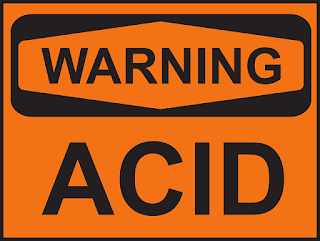Understanding Your Body Ph Balance
High acidity can become a dangerous condition that weakens all major body systems. It makes your internal environment conducive to disease. A pH-balanced environment, on the other hand, allows proper metabolic functioning and gives your body resistance to disease. A healthy body maintains alkaline reserves that are used to meet emergency demands.
Also Check: Ph balance and effect on bone density
Researchers find that most people are at least slightly “acidic”; their pH is low. If your pH is too acidic, your body borrows minerals – such as calcium, magnesium, potassium and sodium – from vital organs and bones to neutralize and remove the acid. Although high acidity may not be outwardly noticeable, it can severely affect overall health in a negative way. Alkalinity in the body is much more rare, but just as potentially serious. It often takes longer for a person who is “alkaline” to achieve balance than one who is “acidic.”
Also Check: The acid reflux
Water is the most abundant compound in the human body, comprising 70% of the body. The body has an acid-alkaline (or acid-base) ratio called the pH, which is a balance between positively charged ions (acid-forming) and negatively charged ions (alkaline-forming). The body continually strives to balance pH. When this balance is compromised many problems can occur.
Also Check: Cannot body odor runaway from it
It is important to understand that we are not talking about stomach acid or the pH of the stomach. We are talking about the pH of the body fluids and tissues, which is an entirely different matter.
It is recommended that you test your pH levels to determine if your body pH needs immediate attention. By using pH test strips, you can determine your pH factor quickly and easily in the privacy of your own home. If your urinary pH fluctuates between 6.0 to 6.5 in the morning and between 6.5 and 7.0 in the evening, your body is functioning within a healthy range. If you saliva stays between 6.5 and 7.5 all day, your body is functioning within a healthy range. The best time to test your pH is about one hour before a meal and two hours after a meal. Test your pH two days a week.
Also Check: Ph balance and effect on bone density
Researchers find that most people are at least slightly “acidic”; their pH is low. If your pH is too acidic, your body borrows minerals – such as calcium, magnesium, potassium and sodium – from vital organs and bones to neutralize and remove the acid. Although high acidity may not be outwardly noticeable, it can severely affect overall health in a negative way. Alkalinity in the body is much more rare, but just as potentially serious. It often takes longer for a person who is “alkaline” to achieve balance than one who is “acidic.”
Also Check: The acid reflux
Water is the most abundant compound in the human body, comprising 70% of the body. The body has an acid-alkaline (or acid-base) ratio called the pH, which is a balance between positively charged ions (acid-forming) and negatively charged ions (alkaline-forming). The body continually strives to balance pH. When this balance is compromised many problems can occur.
Also Check: Cannot body odor runaway from it
It is important to understand that we are not talking about stomach acid or the pH of the stomach. We are talking about the pH of the body fluids and tissues, which is an entirely different matter.
It is recommended that you test your pH levels to determine if your body pH needs immediate attention. By using pH test strips, you can determine your pH factor quickly and easily in the privacy of your own home. If your urinary pH fluctuates between 6.0 to 6.5 in the morning and between 6.5 and 7.0 in the evening, your body is functioning within a healthy range. If you saliva stays between 6.5 and 7.5 all day, your body is functioning within a healthy range. The best time to test your pH is about one hour before a meal and two hours after a meal. Test your pH two days a week.












0 comments:
Post a Comment